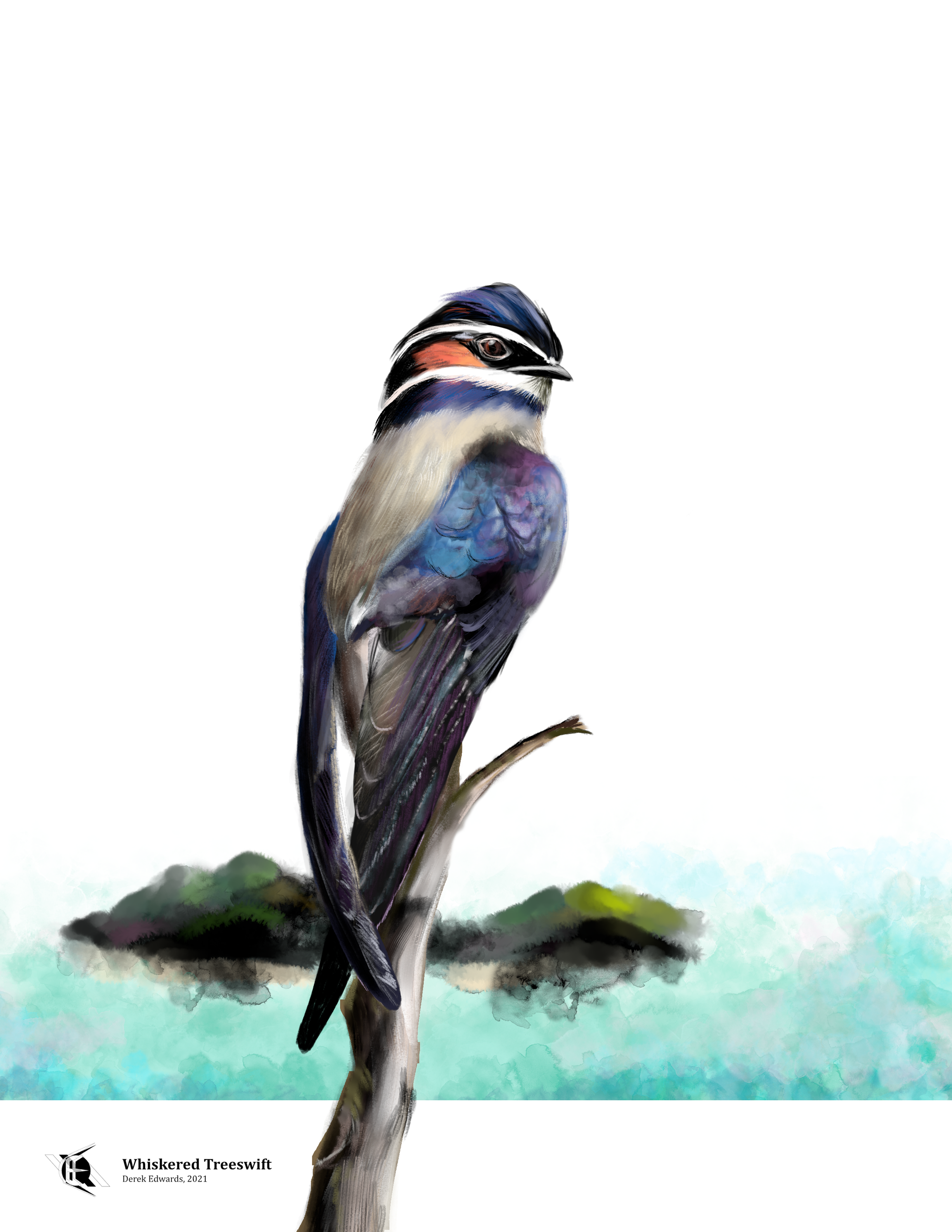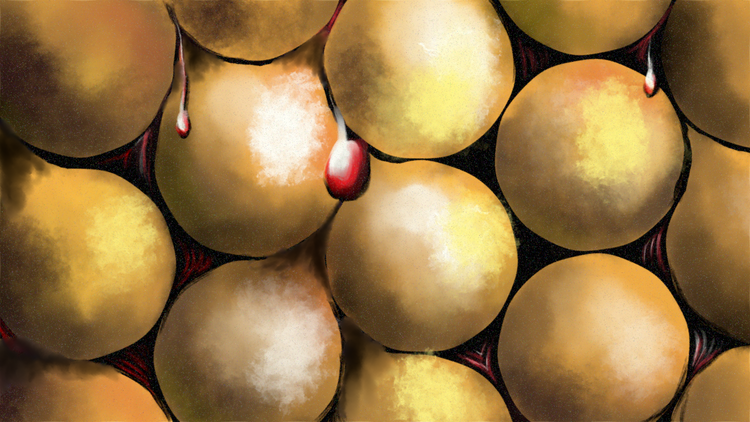
Running Commentary 5/13/2024
Hello,
I don't quite know why, but I'm really having a good year for finally finding birds I've been searching for for some time. The pintail, the sapsucker, the meadowlark, and, this past week, two more: an eastern towhee and a couple of bobolinks. Neither of these are the bird this week; with Mother's Day being yesterday, I took the opportunity to re-write my write-up of the whiskered treeswift and save myself some drawing time to spend with my mother instead
Anyway...
Watching...

Tales of the Empire
Once again, I'll be giving my full review of this collection of shorts soon, but here are my thoughts on the second three episodes:
- My concerns that I laid out on 4/8/2024 that Barriss Offee would be either mis-characterized as a fighter or else tortured to turn her were, happily, unfounded. We get a bit of a different take on the Inquisitorius here than what we've seen thus far; Barriss seems to be part of a second wave of recruitment compared to when Iskat Akaris was brought onboard, which might have something to do with it. Here, the Inquisitorius bills itself as a successor order to the Jedi, loyal where they were treasonous. Barriss never seems especially comfortable as an Inquisitor but she wasn't entirely comfortable as a Jedi either, and she gets out of jail. Still, she tries to be a force for peace, which puts her at odds with the Fourth Sister (whose name we finally get). Overall I think her story is quite well told here.
- We get confirmation here that Marrok was an Inquisitor. Not that we had much reason to doubt that, but we hadn't seen him as an Inquisitor before.
- The big question in the end is: is Barriss dead? I think she is until she isn't, if that makes sense. There's just enough ambiguity that if someone wanted to further her story, they could without too much trouble, but as it stands I think she's dead and her story ends here. The story doesn't demand a further chapter.

Bird of the Week
The advent of genetic sequencing has brought a cascade of changes to the taxonomy of many living creatures, birds certainly included. Many birds thought to be distantly related due to general similarity (grebes and loon, or hawks and falcons, for example) has been found to be quite distant from one another. And others, that seemed quite different, were found to be rather closely related. Take hummingbirds and nightjars, which are increasingly regarded to be members of the same order. Cornell and the IUCN both now place the former members of the Apodiformes into Caprimulgiformes.1,2 Then again, Sibley and Ahlquist keep the Apodiformes, split the hummingbirds off into their own order, and throw the nightjars in with the owls.3 Whatever happens, though, it seems that two families will stay paired in some way or another: the Apodidae, which comprises the swifts, and the Hemiprocnidae, which contains the treeswifts, including this week's bird: the Whiskered Treeswift.
While there are hundreds of swifts, there are only four treeswifts (or crested-swifts, as they are sometimes also called) in the world, all of whom live somewhere in Southeast Asia. They are the mustached, gray-rumped, crested, and whiskered; of these the whiskered is the smallest and most secretive, living exclusively in mature forest and generally keeping below the canopy.
The difference between treeswifts and swifts is there in the name: treeswifts live in the trees, while swifts don't. The swifts are true birds of the air, flying for most of their lives. On the rare occasion that they do land, they don't really have legs enough to perch, instead clinging to the walls of caverns, or else the cavernous constructs of people or woodpeckers. Treeswifts, by contrast, have legs just enough that they can perch on small branches, so they can effectively live in trees. They even build their nests in trees. The nest of a treeswift is among the least conspicuous of any nest-building bird; it is constructed attached to the edge of an upright branch, made, in a very swift-like fashion, from feathers bound together with the bird's own saliva. The nest is just large enough to hold a single egg, and when the treeswift sits to incubate its egg, it appears simply to be perched on a stick.4
With their long, pointed wings, forked tails, and glossy blue-and-orange coloring, treeswifts look something like the globally-found barn swallow. Indeed, their genus and family names come from the Latin for "half-swallow".5 But the swallows are passerines, not actually related closely to the swifts and treeswifts, though the two sorts of birds look and act much the same. To science, the whiskered treeswift is Hemiprocne comata; the species name is Latin for "hairy",5 the root word being the same as that for "comet", the name for "long-haired" stars.6
- IUCN Red List of Threatened Species. “The IUCN Red List of Threatened Species – Caprimulgiformes,” n.d. https://www.iucnredlist.org/search?taxonomies=22672819&searchType=species.
- eBird Editors, “The eBird Taxonomy” n.d. Cornell Laboratory of Ornithology, Ithaca. https://science.ebird.org/en/use-ebird-data/the-ebird-taxonomy.
- Wikipedia contributors. “Sibley–Ahlquist Taxonomy of Birds.” Wikipedia, June 30, 2023. https://en.wikipedia.org/wiki/Sibley%E2%80%93Ahlquist_taxonomy_of_birds#cite_note-2., referencing Sibley, C. G. & Ahlquist, J. A. 1990. Phylogeny and Classification of Birds. New Haven: Yale University Press.
- Sundstrom, Bob. “Treeswifts: Exquisite Minimalists” BirdNote November 16, 2023. https://www.birdnote.org/listen/shows/treeswifts-exquisite-minimalists.
- Jobling, J. A. (editor). The Key to Scientific Names in Birds of the World (S. M. Billerman et al. editors), Cornell Laboratory of Ornithology, Ithaca.
- Merriam-Webster.com Dictionary, s.v. “comet,” accessed May 12, 2024, https://www.merriam-webster.com/dictionary/comet.
Curation Links
All Bad Music Will Eventually Disappear | Ted Gioia, The Honest Broker
An assurance that whatever crummy modern music won’t stand the test of time, yes, but also an admonition not to let good music also fade away just because it doesn’t become immediately popular. Energy spent improving the catalogs of future music fans should be focused on preserving the under-rated, rather than pre-maturely destroying the over-rated.
The Wild Turkeys of Schleswig | Tim Harford, Cautionary Tales
[AUDIO] “The Turkeys of Schleswig showed us that in a fascist state people will queue up to endorse an obvious lie. But the miracle of Marion Kirsha showed us that even a democracy isn't invulnerable to grand self-deceptions…In the end, Lothar Malskat got what he wanted to. He was finally acknowledged as the artist who painted the interior of the Marion Kyosha. He also got something he didn't want. Eighteen months in prison.” (39:12)
Prom Dresses Are Just Dresses Now | Hilary George-Parkin, The Atlantic
A look at how prom dresses are coming to look less like their own thing compared to the formalwear of grown women, and how adults are retaining more trappings of their childhood, all the result of people of all ages joining in the same social media networks, influencing each other’s fashion choices without regard of usual age segregations. George-Parkin writes with a wistfullness for a look which has been flattened out of existence.
Nightfall | Isaac Asimov
[FICTION] Asimov's legendary 1941 story of a world tracing a path between multiple suns, where night only falls once every couple of millennia. Often called the greatest short story in science fiction, "Nightfall" is here preserved by Stony Brook University.
See the full archive of curations on Notion






Member Commentary